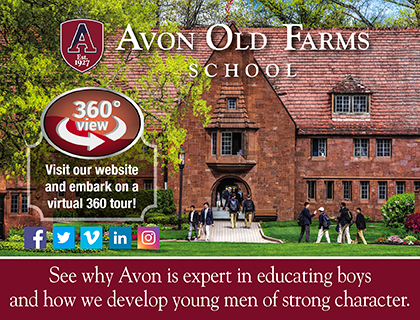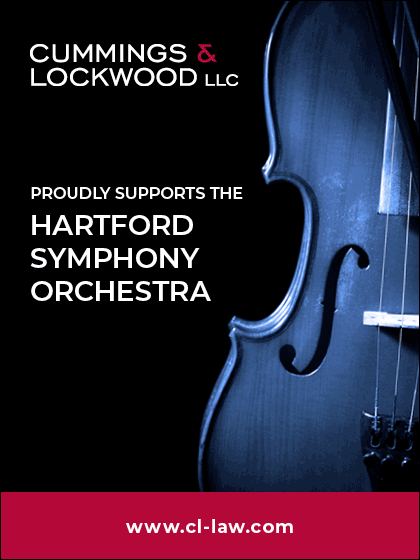World Premiere: October 30, 1944
Last HSO performance: HSO Premiere
Instrumentation: flute, clarinet, bassoon, piano,
2 violin I, 2 violin II, 2 violas, 2 cellos, 1 double bass
Duration: 33’
Mrs. Elizabeth Sprague Coolidge, one of America’s greatest patrons of the arts, went to see a dance recital by Martha Graham in 1942. So taken with the genius of the dancer-choreographer was Mrs. Coolidge that she offered to have three ballets specially composed for her. Miss Graham chose as composers of the music Darius Milhaud, Paul Hindemith and an American whose work she had admired for over a decade — Aaron Copland. In 1931, Miss Graham had staged Copland’s Piano Variations as the ballet Dithyramb, and she was eager to have another dance piece from him, especially in view of his recent successes with Billy the Kid and Rodeo. She devised a scenario based on her memories of her grandmother’s farm in turn-of-the-century Pennsylvania, and it proved to be a perfect match for the direct, quintessentially American style that Copland espoused in those years. Edwin Denby’s description of the ballet’s action from his review of the New York premiere in May 1945 was reprinted in the published score:
“[The ballet concerns] a pioneer celebration in spring around a newly built farmhouse in the Pennsylvania hills in the early part of the 19th century. The bride-to-be and the young farmer-husband enact the emotions, joyful and apprehensive, their new domestic partnership invites. An older neighbor suggests now and then the rocky confidence of experience. A revivalist and his followers remind the new householders of the strange and terrible aspects of human fate. At the end, the couple are left quiet and strong in their new house.”
The premiere was set for October 1944 (in honor of Mrs. Coolidge’s 80th birthday) in the auditorium of the Library of Congress in Washington, D.C., and the limited space in the theater allowed Copland to use a chamber orchestra of only thirteen instruments (flute, clarinet, bassoon, piano and nine strings). He began work on the score in June 1943 in Hollywood while writing the music for the movie North Star, and finished it a year later in Cambridge, where he was delivering the Horatio Appleton Lamb Lectures at Harvard. The plot, the music and most of the choreography were completed before a title for the piece was selected. Miss Graham was taken at just that time with the name of a poem by Hart Crane — Appalachian Spring — and she adopted it for her new ballet, though the content of the poem has no relation with the stage work.
Appalachian Spring was unveiled in Washington on October 30, 1944, and repeated in New York in May to great acclaim, garnering the 1945 Pulitzer Prize for Music and the New York Music Critics Circle Award as the outstanding theatrical work of the 1944-1945 season. Soon after its New York premiere, Copland revised the score as a suite of eight continuous sections for full orchestra by eliminating about eight minutes of music in which, he said, “the interest is primarily choreographic.” On October 4, 1945, Artur Rodzinski led the New York Philharmonic in the premiere of that version.
In the 1950s, Eugene Ormandy, Music Director of the Philadelphia Orchestra, approached Copland about creating a version of the complete Appalachian Spring for full orchestra. Copland did orchestrate one large cut but he never finished the project, so in 2014 the Aaron Copland Fund for Music commissioned a collaborative completion of the score from Aaron Sherber, Music Director of the Martha Graham Dance Company; Jennifer DeLapp-Birkett, a Copland scholar and historian who works with the Fund; Philip Rothman, editorial adviser to the Fund; and composer and conductor David Newman. Of Copland’s completed section that the team used as the model for the work, Rothman said that it is “more dissonant and modern-sounding than what is typically associated with Copland’s work from that period.” To which Sherber added, “Much of that section is indeed more disquieting, more edgy, than the music in the rest of the suite, which to me makes the ballet a richer piece of music. So I think for people who know the suite, hearing the full ballet will make them think of the piece differently, just as for people who know Graham’s dance, seeing it with full orchestra will make them think of it differently as well.”
The complete Appalachian Spring for full orchestra was premiered on May 11, 2016 by Meadows Symphony Orchestra and Meadows Dance Ensemble at Southern Methodist University in Dallas, conducted by Paul Phillips.
©2024 Dr. Richard E. Rodda

